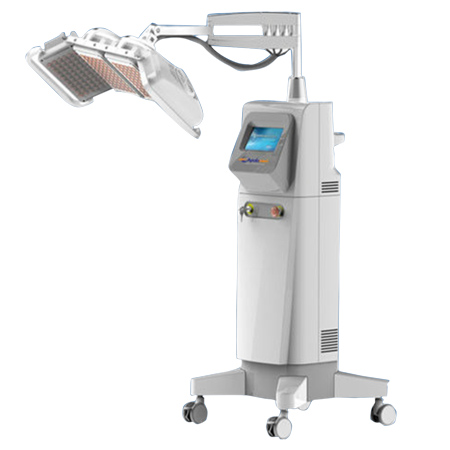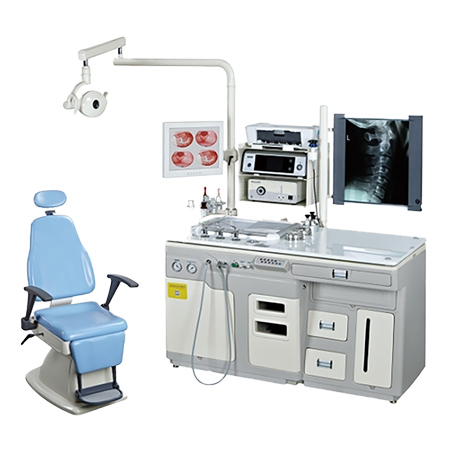Prostate Therapy Apparatus

What is it?
A prostate therapy apparatus is an advanced medical device specifically designed for the treatment and management of various conditions affecting the prostate gland. This innovative apparatus is transforming the field of prostate therapy by offering targeted, non-invasive, or minimally invasive solutions that address prostate disorders, such as benign prostatic hyperplasia (BPH) or prostate cancer.
One notable aspect of the prostate therapy apparatus is its ability to provide effective and personalized treatments. Equipped with cutting-edge technology, this apparatus enables healthcare professionals to administer therapeutic interventions with exceptional precision, ensuring optimal results and minimizing discomfort for patients. It is designed to address a wide range of prostate conditions, providing tailored treatments that aim to alleviate symptoms, improve urinary function, and promote overall prostate health.
The apparatus offers a variety of treatment options, customized to meet individual patient needs. For example, in the case of BPH, the prostate therapy apparatus may utilize techniques such as transurethral microwave thermotherapy (TUMT) or transurethral needle ablation (TUNA). These methods use thermal energy to heat and shrink the enlarged prostate tissue, relieving urinary symptoms and restoring normal urinary flow.
For prostate cancer, the apparatus can deliver targeted radiation therapy, known as brachytherapy or prostate seed implantation. This treatment involves the placement of tiny radioactive seeds directly into the prostate gland, emitting localized radiation to target and destroy cancer cells while minimizing damage to surrounding healthy tissues.
Moreover, the prostate therapy apparatus prioritizes patient safety and comfort. It is designed with ergonomic features, ensuring ease of use for healthcare professionals during procedures. The apparatus often incorporates advanced imaging technologies, such as ultrasound or magnetic resonance imaging (MRI), to provide real-time visualization and guidance during treatment. This enhances accuracy, reduces complications, and improves patient outcomes.
Why?
A prostate therapy apparatus is used for several important reasons in the field of prostate health. Here are key purposes and benefits of using this apparatus:
1. Benign Prostatic Hyperplasia (BPH): The apparatus is employed to address BPH, a condition where the prostate gland enlarges and causes urinary symptoms. It provides non-invasive or minimally invasive treatments that aim to alleviate symptoms such as urinary frequency, urgency, weak flow, and incomplete bladder emptying. By reducing the size of the prostate or improving its function, the apparatus helps restore normal urinary flow and quality of life.
2. Prostate Cancer: The prostate therapy apparatus is used in the treatment of prostate cancer, a common cancer among men. It provides targeted radiation therapy, such as brachytherapy or prostate seed implantation, to destroy cancer cells while minimizing damage to surrounding healthy tissues. This allows for effective cancer treatment with reduced side effects and improved patient outcomes.
3. Minimally Invasive Procedures: The apparatus offers minimally invasive procedures that are less traumatic than traditional surgical interventions. For instance, techniques like transurethral microwave thermotherapy (TUMT) or transurethral needle ablation (TUNA) can be performed using the apparatus. These procedures provide effective treatment for BPH without the need for major surgery, resulting in faster recovery times, less pain, and minimal scarring.
4. Symptom Relief: The prostate therapy apparatus is utilized to alleviate bothersome urinary symptoms associated with prostate conditions. By targeting the underlying causes of these symptoms, such as prostate enlargement or cancerous growth, the apparatus helps improve urinary flow, reduce frequency and urgency, and enhance overall bladder function. This leads to improved quality of life and relief from discomfort.
5. Precision and Accuracy: The apparatus enables healthcare professionals to deliver precise and accurate treatments. It often incorporates imaging technologies, such as ultrasound or MRI, to guide treatment and ensure that therapeutic interventions are targeted to the specific area of concern. This precision enhances treatment efficacy, minimizes damage to healthy tissues, and reduces the risk of complications.
6. Personalized Treatment: The prostate therapy apparatus allows for personalized treatment options tailored to individual patient needs. Depending on the condition and severity, healthcare professionals can select the most appropriate treatment modality and customize parameters such as energy levels, duration, or placement of radiation sources. This personalized approach ensures that patients receive optimal care based on their specific circumstances.
How it works?
The working mechanism of a prostate therapy apparatus can vary depending on the specific type of treatment being administered. However, here are some general principles and techniques commonly employed:
1. Thermal Therapies: For conditions like benign prostatic hyperplasia (BPH), the prostate therapy apparatus may use thermal energy to treat the enlarged prostate. Techniques such as transurethral microwave thermotherapy (TUMT) or transurethral needle ablation (TUNA) involve the delivery of controlled heat to the prostate tissue. The apparatus emits microwave energy or uses radiofrequency waves to heat and destroy excess prostate tissue, thereby reducing the size of the gland and relieving urinary symptoms.
2. Radiation Therapy: In the case of prostate cancer, the prostate therapy apparatus may be used for targeted radiation therapy. One common method is brachytherapy or prostate seed implantation. Tiny radioactive seeds are placed directly into the prostate gland, either temporarily or permanently, delivering localized radiation to target and destroy cancer cells. The apparatus assists in the precise placement of the seeds, ensuring accurate targeting of the tumor while minimizing radiation exposure to surrounding healthy tissues.
3. Imaging and Guidance: The prostate therapy apparatus often incorporates advanced imaging technologies, such as ultrasound or magnetic resonance imaging (MRI), for visualization and guidance during treatment. These imaging modalities provide real-time visualization of the prostate gland, allowing healthcare professionals to accurately target treatment areas and monitor the progress of the therapy. The apparatus may have built-in imaging capabilities or work in conjunction with external imaging devices.
4. Energy Delivery and Control: The apparatus delivers the appropriate form of energy, such as microwave, radiofrequency, or radiation, to the prostate gland. It is designed to provide controlled and precise energy delivery to ensure optimal treatment outcomes. The apparatus may have adjustable energy settings or parameters that can be customized based on the patient’s condition and treatment goals. These controls allow healthcare professionals to tailor the therapy to individual needs and ensure patient safety.
5. Minimally Invasive Approach: The prostate therapy apparatus is designed to offer minimally invasive treatments, reducing the need for more invasive surgical procedures. This typically involves accessing the prostate gland through the urethra, eliminating the need for external incisions. Minimally invasive approaches lead to shorter procedure times, faster recovery, reduced pain, and minimal scarring.
Equipements
Lorem ipsum dolor sit amet, consectetur adipisicing elit. Architecto modi vel repudiandae reiciendis, cupiditate quod voluptatibus, placeat ad assumenda molestiae alias quisquam




